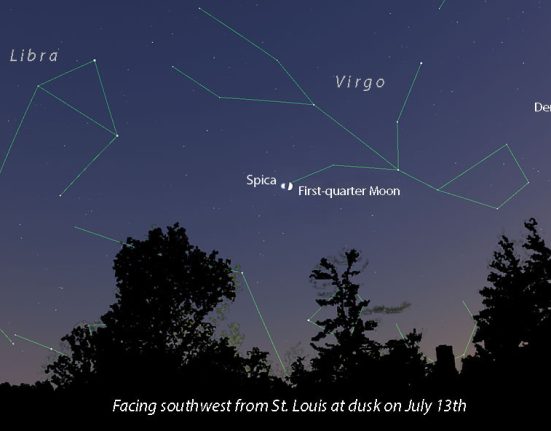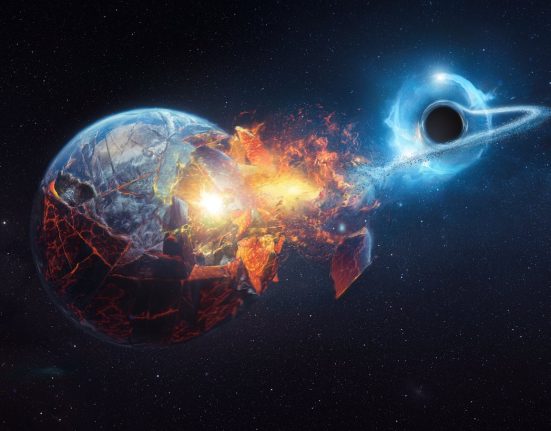The very structure of space and time in the universe is more mysterious than we ever thought. Scientists have long been intrigued by the nature of dark energy and the peculiar behavior of stars that seem to defy the conventional rules of physics. A new study offers a new perspective on these cosmic enigmas, suggesting that an underlying principle of minimum velocity could be the key to unlocking their secrets. This intriguing concept challenges our understanding of space and time, and potentially reshapes our view of the universe itself.
A study published in Physics of the Dark Universe has revealed a novel approach to understanding dark energy stars, proposing that Lorentz violation with an invariant minimum velocity forms the basis of the Gravitational Bose-Einstein Condensate (GBEC) of a star. dark energy. This innovative research, carried out by Dr. Cláudio Nassif Cruz of the Center for Research in Theoretical Physics, offers a profound change in cosmological models, shedding light on the complexities of the quantum vacuum and space-time.
Dr. Cruz proposes that the introduction of an invariant minimum velocity, linked to the concept of Symmetric Special Relativity (SSR), fundamentally alters the structure of space-time. This minimum velocity, called V, is directly associated with the Planck length and changes the causal structure of spacetime, thus influencing the formation and behavior of GBEC within dark energy stars. The research postulates that this new understanding could solve the event horizon singularity puzzle traditionally predicted in gravitational collapse scenarios.
“Our study shows that the presence of an invariant minimum velocity in the fabric of space-time leads to a phase transition between gravity and antigravity, which prevents the formation of a singularity at the event horizon. This transition occurs before reaching the Schwarzschild radius, thus eliminating problematic divergence and allowing for a more stable structure,” explained Dr. Cruz.
The study describes the important implications of this phase transition, where a repulsive core, described by a GBEC metric, replaces the traditional concept of a black hole's event horizon. This repulsive core is enveloped by a region of phase coexistence that bridges gravity and antigravity, preventing divergence of space-time metrics and allowing signal propagation, which is impossible in classical black hole models.
By mapping the SSR metric, which represents the minimum velocity, to the GBEC metric, Dr. Cruz was able to link the cosmological constant, which represents the energy density of the vacuum, to this invariant minimum velocity. This innovative approach provides a quantum interpretation of the GBEC, where the minimum velocity induces a strong anisotropy leading to the phase transition observed during the collapse of a star.
“The SSR metric we developed is similar to the de Sitter metric, known for representing the spacetime of a universe with a positive cosmological constant. However, our metric includes a minimum velocity, which provides a more complete understanding of vacuum energy and its role in the cosmos,” explained Dr. Cruz.
The implications of this study are enormous, as it challenges the traditional view of black holes and provides a new model for understanding the components of the dark energy of the universe. The elimination of the event horizon singularity and the introduction of a phase transition region offer new possibilities for exploring the behavior of extreme gravitational systems and the nature of dark energy.
“This research not only provides a solution to the long-standing problem of singularity in black holes, but also opens new avenues to explore the interaction between quantum mechanics and general relativity, that is, the theory of quantum gravity. The idea that a minimum velocity could be as fundamental as the speed of light in the fabric of space-time is truly revolutionary and sheds light on Astrophysics, Cosmology and various areas of Physics,” said Dr. Cruz.
In summary, Dr. Cruz's study presents a transformative perspective on dark energy stars, offering a solid theoretical framework that could reshape our understanding of the most enigmatic phenomena in the universe. The incorporation of Lorentz violation due to an invariant minimum velocity into the GBEC model provides a comprehensive solution to the problems posed by classical black hole theories and paves the way for future explorations of the mysteries of dark energy.
Magazine reference
Nassif Cruz, C., dos Santos, RF and Amaro de Faria Jr., AC “Lorentz violation with an invariant minimum velocity as the basis of the Bose Einstein gravitational condensate of a dark energy star.” Physics of the Dark Universe (2020). DOI: https://doi.org/10.1016/j.dark.2019.100454
About the Author

Claudio Nassif Cruz He is a retired professor of Physics from the Federal University of Ouro Preto (UFOP), Ouro Preto, Minas Gerais, Brazil. He was born in Além Paraíba, Minas Gerais, in August 1967.
He obtained his bachelor's degree in Physics (1992) from the Federal University of Juiz de Fora (UFJF), Minas Gerais, Brazil.
He obtained his master's degree (1992) and doctorate (2002) in Physics from the Federal University of Minas Gerais (UFMG), Belo Horizonte, Minas Gerais, Brazil.
He has extensive experience in the area of Condensed Matter Physics, with emphasis on Equations of State, Phase Equilibrium and Phase Transitions, focusing as a line of work on the following topics, namely, Thompson approach, Renormalization Group, exponents dynamic and stationary critical for various systems. , diffusion limited chemical reactions, polymers, surface growth, N-vector model without random field. He also addresses some topics in field theories, such as quantum electrodynamics (QED) and quantum chromodynamics (QCD), according to Thompson's approach.
In another line of original research that he himself introduced, he works on the exploration of another possibility of Lorentz symmetry breaking for a Deformed Special Relativity with a minimum invariant velocity (Symmetric Special Relativity), where a background field is generated by a non-Lorentzian background. dynamics at low energies, thus explaining the minuscule positive value of the cosmological constant and also explaining the principle of quantum uncertainty, allowing us to establish a connection between quantum physics and cosmology.













Leave feedback about this